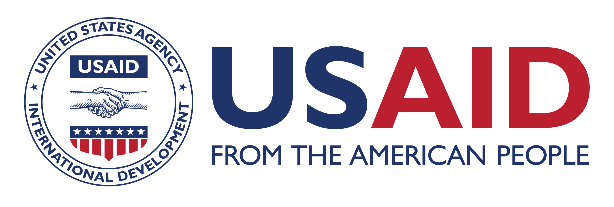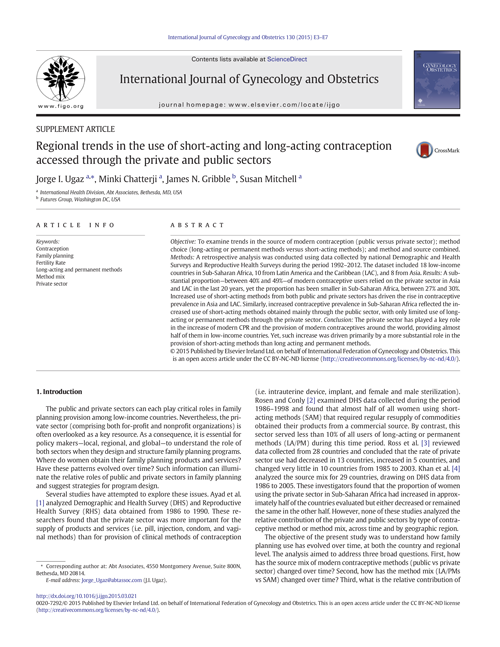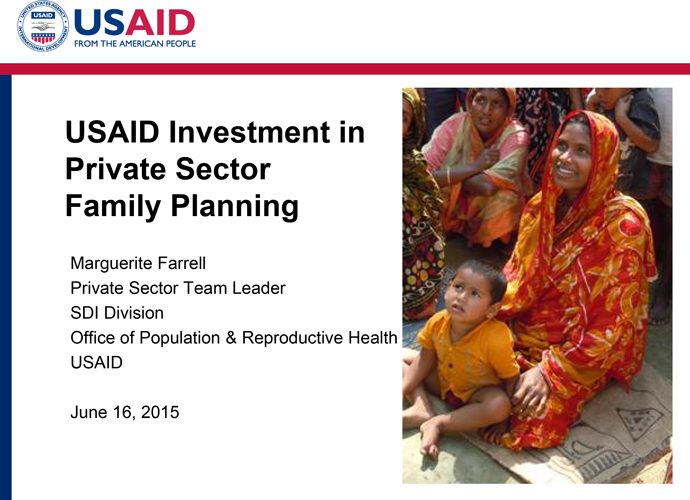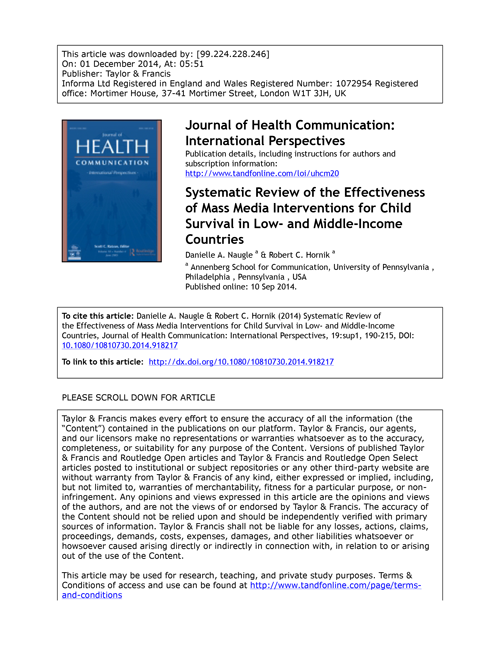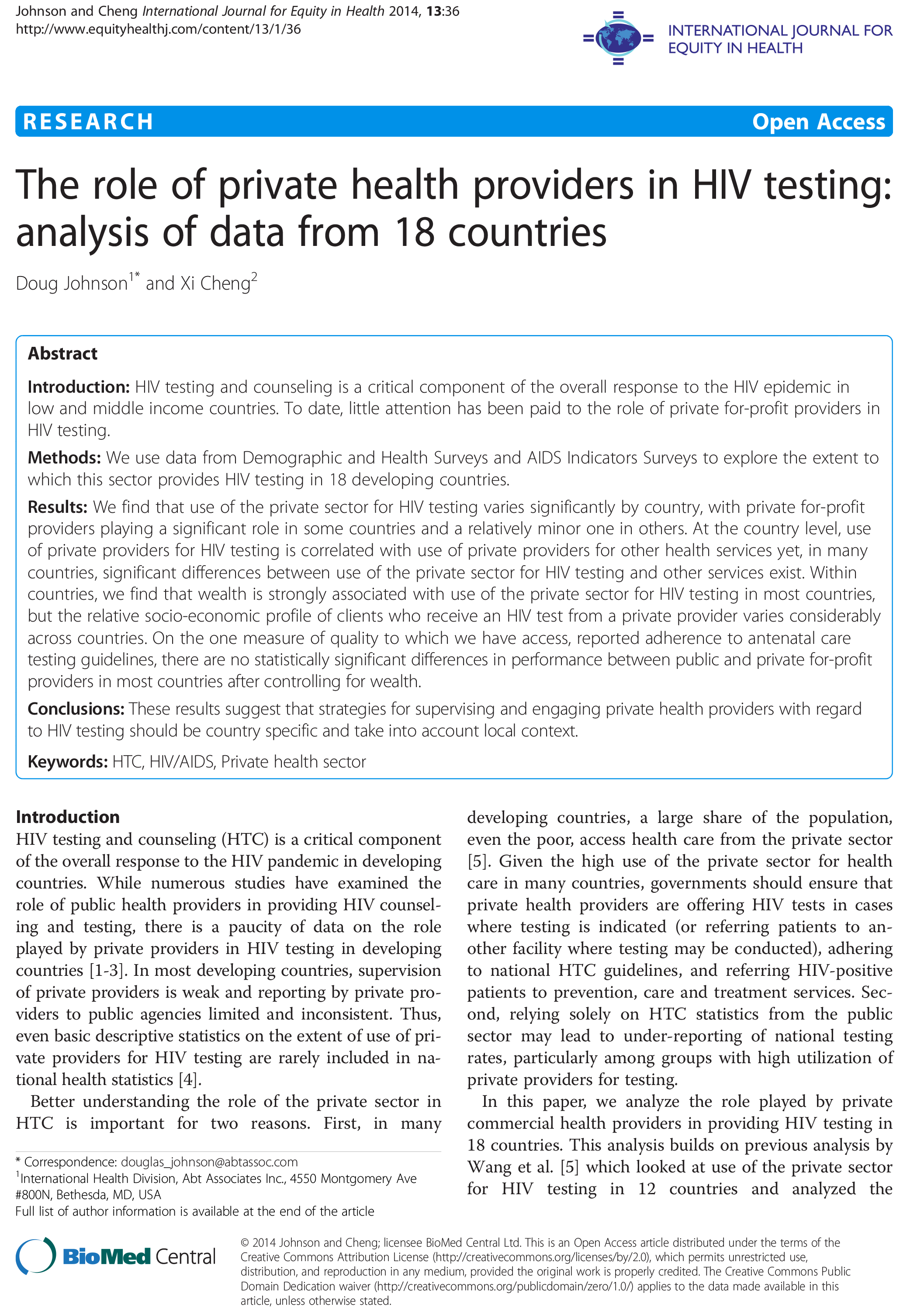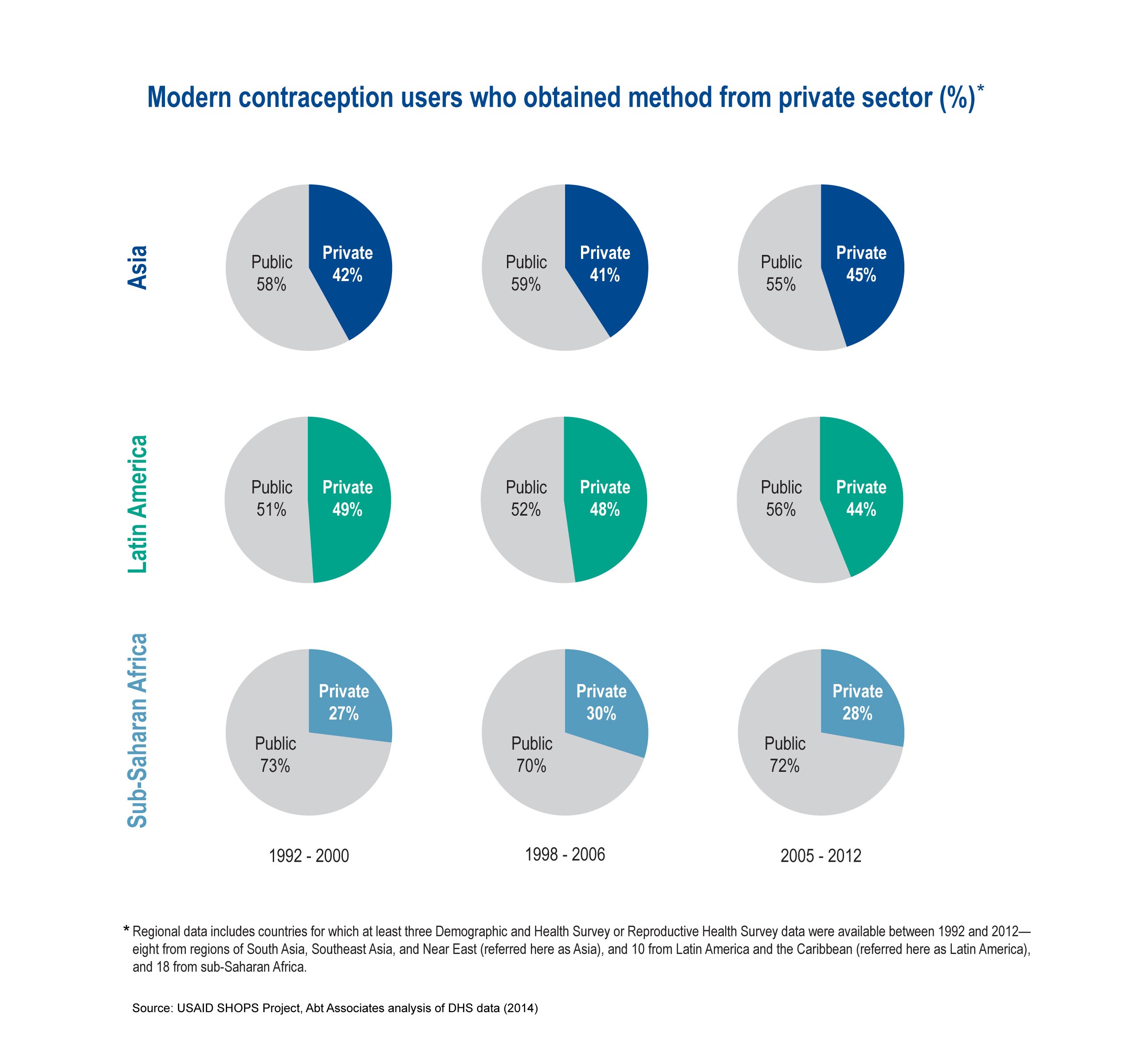
Resource Library
Regional Trends in the Use of Short-acting and Long-acting Contraception Accessed through the Private and Public Sectors
To examine trends in the source of modern contraception (public versus private sector); method choice (long-acting or permanent methods versus short-acting methods); and method and source combined, a retrospective analysis was conducted using data collected by national Demographic and Health Surveys and Reproductive Health Surveys during the period 1992–2012. The data-set included 18 low-income countries in Sub-Saharan Africa, 10 from Latin America and the Caribbean (LAC), and 8 from Asia. A substantial proportion—between 40% and 49%—of modern contraceptive users relied on the private sector in Asia and LAC in the last 20 years, yet the proportion has been smaller in Sub-Saharan Africa, between 27% and 30%. Increased use of short-acting methods from both public and private sectors has driven the rise in contraceptive prevalence in Asia and LAC. Similarly, increased contraceptive prevalence in Sub-Saharan Africa reflected the increased use of short-acting methods obtained mainly through the public sector, with only limited use of long-acting or permanent methods through the private sector. The private sector has played a key role in the increase of modern CPR and the provision of modern contraceptives around the world, providing almost half of them in low-income countries. Yet, such increase was driven primarily by a more substantial role in the provision of short-acting methods than long acting and permanent methods. This article was published in the International Journal of Gynecology and Obstetrics in August 2015.
Resource Type :
Country :
Year : 2015-08-01T00:00:00
Language : English
Project : SHOPS

Resource Library
Strategies for Changing the Behavior of Private Providers
As the international health community progresses in achieving global development goals, the ability to change the behavior of providers to achieve optimal health outcomes becomes more critical. This primer was designed as a resource for field staff who implement private provider behavior change programs. Informed by professional experience and a literature review, the primer covers behavior change theories and an adoption model. A review of the four forces that influence provider decisionmaking (company promotion, product experience, outside information sources, and environmental factors) draws on examples from developing countries. It concludes with essential information for program design and implementation.
Resource Type :
Country :
Year : 2016-02-12T00:00:00
Language : English
Project : SHOPS

Resource Library
USAID Investment in Private Sector Family Planning
This presentation examines USAID investments in family planning and reproductive health. It was presented by Marguerite Farrell at the SHOPS end-of-project event on June 16, 2015.
Resource Type : Presentation
Country : Global
Year : 2015-07-02T00:00:00
Language : English
Project : SHOPS

Resource Library
Systematic Review of the Effectiveness of Mass Media Interventions for Child Survival in Low and Middle Income Countries
Through a systematic review of the literature, this article summarizes and evaluates evidence for the effectiveness of mass media interventions for child survival. To be included, studies had to describe a mass media intervention; address a child survival health topic; present quantitative data from a low- or middle-income country; use an evaluation design that compared outcomes using pre- and postintervention data, treatment versus comparison groups, or postintervention data across levels of exposure; and report a behavioral or health outcome. The 111 campaign evaluations that met the inclusion criteria included 15 diarrheal disease, 8 immunization, 2 malaria, 14 nutrition, 1 preventing mother-to-child transmission of HIV, 4 respiratory disease, and 67 reproductive health interventions. These evaluations were then sorted into weak (n ¼ 33), moderate (n¼32), and stronger evaluations (n¼46) on the basis of the sampling method, the evaluation design, and efforts to address threats to inference of mass media effects. The moderate and stronger evaluations provide evidence that mass media-centric campaigns can positively impact a wide range of child survival health behaviors.
Resource Type :
Country :
Year : 2014-09-10T00:00:00
Language : English
Project : SHOPS

Resource Library
Contracting - Sample Service Agreement Template
Sample service agreement for service delivery organization use.
Resource Type : Tool
Country :
Year : 2015-05-04T00:00:00
Language : English
Project : SHOPS

Resource Library
Contracting FAQ - Sample Contract Plan
This template is adapted from the "Performance-Based Contracting for Health Services in Developing Countries: A Toolkit" published in 2008.
Resource Type : Tool
Country :
Year : 2015-05-05T00:00:00
Language : English
Project : SHOPS

Resource Library
iCCM 2014 Lessons Learned Document
This Lessons Learned document presents a summary of evidence on the relationship between iCCM programs and care-‐seeking and treatment utilization for childhood illnesses, as well as factors and strategies that may generate demand for these programs.
Resource Type :
Country :
Year : 2014-03-03T00:00:00
Language :
Project : SHOPS

Resource Library
The Role of Private Health Providers in HIV Testing: Analysis of Data from 18 Countries
This analysis examines the role of the private health sector in HIV testing. It uses data from Demographic and Health Surveys and AIDS Indicators Surveys to explore the extent to which this sector provides HIV testing in 18 developing countries. The analysis shows that use of the private sector for HIV testing varies significantly by country, with private for-profit providers playing a significant role in some countries and a relatively minor one in others. These results suggest that strategies for supervising and engaging private health providers with regard to HIV testing should be country specific and take into account local context.
This analysis was published in the International Journal for Equity in Health in 2014.
Resource Type :
Country : Global
Year : 2014-11-03T00:00:00
Language : English
Project : SHOPS

Resource Library
Meeting Demand for Modern Contraception: Role of the Private Sector
Improving access to family planning is critical to improving maternal and child health outcomes, and it requires the engagement of the public and private sectors. In much of the developing world, a large number of clients rely on the private sector as their source of family planning. The private sector includes a wide range of providers who are at the front lines of providing health care to millions. With an introduction by Susan Mitchell, project director, this brief analyzes DHS data over 20 years and shows that global increases in the modern contraceptive prevalence rate are largely due to short-acting methods. For information on the full report, contact info@shopsproject.org.
Resource Type : Brief
Country : Global
Year : 2014-09-22T00:00:00
Language : English
Project : SHOPS

Resource Library
Video Transcript: Sharon Nakhimovsky on National Health Accounts
A transcript of a video in which Sharon Nakhimovsky explains national health accounts.
Resource Type : Other
Country : Global
Year : 2014-01-01T00:00:00
Language : English
Project : SHOPS
Pagination
- Previous page
- Page 3
- Next page

